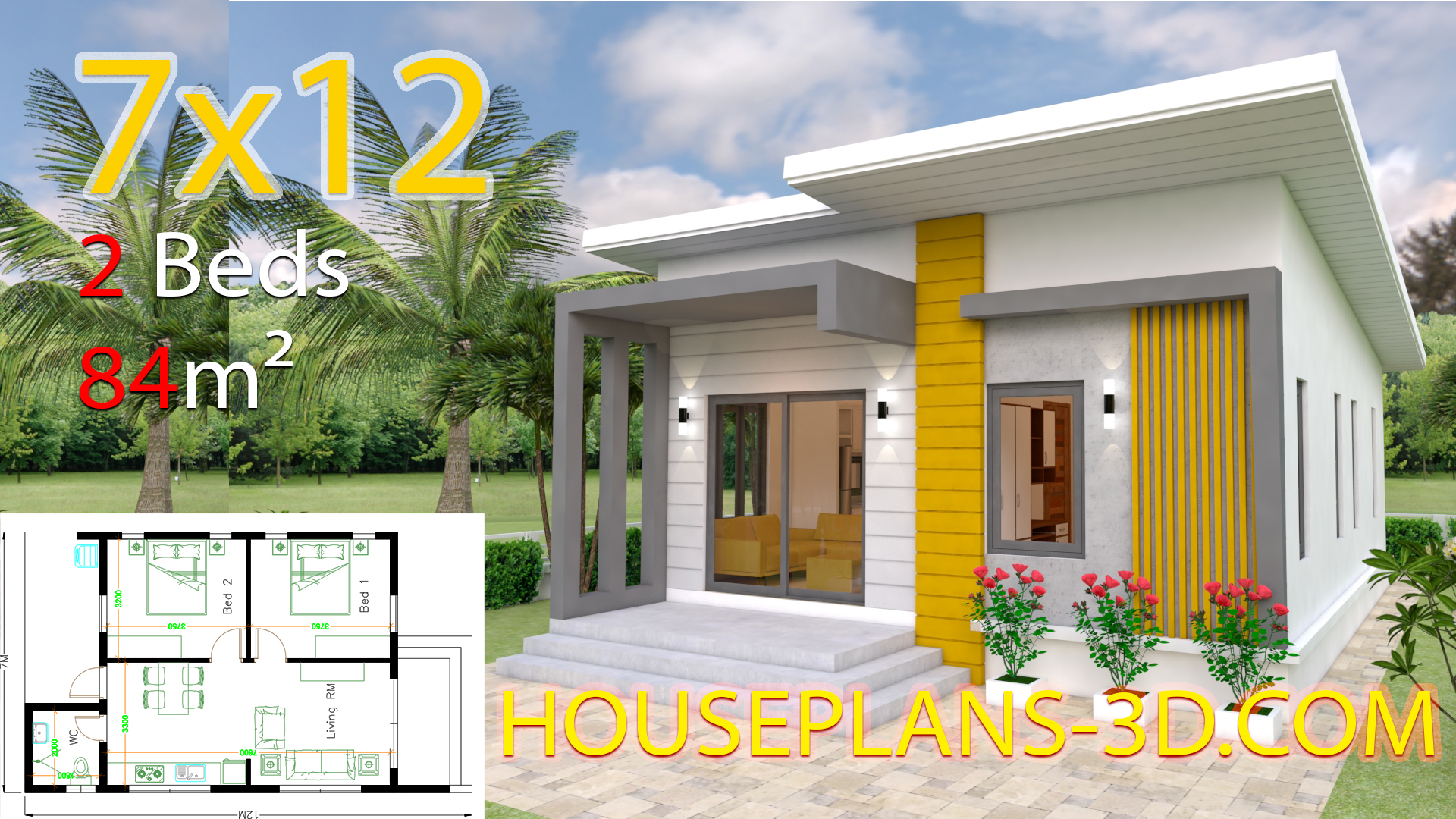Designing a Double Bedroom House Plan

Creating a double bedroom house plan involves careful consideration of space utilization, natural elements, and energy efficiency. This plan should be tailored to meet the needs and preferences of the occupants, ensuring a comfortable and functional living space.
Maximizing Space in a Double Bedroom House Plan
Maximizing space in a double bedroom house plan is crucial for optimizing functionality and creating a sense of spaciousness. This can be achieved through clever storage solutions and multi-functional furniture.
- Built-in Storage: Incorporating built-in storage solutions, such as wardrobes, shelves, and drawers, can significantly enhance storage capacity without compromising floor space. This allows for efficient utilization of vertical space, creating a clutter-free environment.
- Multi-Functional Furniture: Employing multi-functional furniture pieces, such as sofa beds, ottomans with storage compartments, or desks that convert into dining tables, can maximize space flexibility and create a sense of versatility.
- Open Floor Plan: An open floor plan, where living, dining, and kitchen areas are interconnected, can create a sense of spaciousness and enhance natural light flow. This design minimizes visual barriers and promotes a more airy ambiance.
Designing a Double Bedroom House Plan with a Focus on Natural Light and Ventilation
Natural light and ventilation are essential for creating a healthy and inviting living space. A well-designed double bedroom house plan should prioritize these elements to enhance the overall well-being of the occupants.
- Large Windows: Incorporating large windows, especially in south-facing rooms, allows for ample natural light penetration, reducing the need for artificial lighting during the day. This not only brightens the space but also contributes to a more positive and uplifting atmosphere.
- Cross-Ventilation: Strategically placing windows on opposite sides of the house enables cross-ventilation, promoting air circulation and reducing humidity. This is particularly important in warmer climates, ensuring a comfortable indoor temperature.
- Skylights: Installing skylights can introduce natural light into interior spaces that might otherwise be dark. This can be especially beneficial for hallways, bathrooms, or bedrooms that lack sufficient window access.
Creating a Double Bedroom House Plan with an Emphasis on Energy Efficiency and Sustainability
Designing a double bedroom house plan with an emphasis on energy efficiency and sustainability can significantly reduce energy consumption and minimize environmental impact. This approach involves incorporating eco-friendly materials and energy-saving features.
- Insulation: Adequate insulation in walls, ceilings, and floors helps to regulate temperature, reducing heating and cooling costs. This is particularly important in regions with extreme weather conditions.
- Energy-Efficient Appliances: Choosing appliances with high energy efficiency ratings, such as refrigerators, washing machines, and dishwashers, can significantly reduce energy consumption. This contributes to lower utility bills and a reduced carbon footprint.
- Renewable Energy Sources: Exploring renewable energy sources, such as solar panels or wind turbines, can supplement or even replace traditional energy sources, reducing reliance on fossil fuels and promoting sustainability.
Building a Double Bedroom House

Building a double bedroom house is a significant undertaking, requiring careful planning and execution. From selecting the right materials to obtaining necessary permits, there are numerous factors to consider to ensure a successful and satisfying construction project.
Essential Elements for Building a Double Bedroom House
Building a double bedroom house involves numerous decisions and considerations. To ensure a successful project, it is essential to focus on key elements such as building materials, construction techniques, and landscaping.
- Building Materials: The choice of building materials significantly impacts the house’s durability, aesthetics, and cost. Common materials include brick, concrete, wood, and steel, each offering unique advantages and disadvantages. For example, brick offers excellent durability and insulation, while wood is more affordable and easier to work with.
- Construction Techniques: Construction techniques determine the house’s structural integrity and efficiency. Traditional methods like brick and mortar construction are known for their durability, while modern techniques like prefabricated construction offer faster construction times and cost savings.
- Landscaping: Landscaping enhances the house’s aesthetic appeal and provides functional benefits like erosion control and privacy. Consider factors such as the site’s topography, climate, and personal preferences when planning the landscaping.
Obtaining Building Permits and Approvals
Securing necessary permits and approvals is crucial for any construction project, ensuring compliance with local building codes and regulations. The process typically involves submitting detailed plans and specifications to the local building department for review and approval.
- Submit Plans and Specifications: Prepare comprehensive plans and specifications, including floor plans, elevations, and structural details. Ensure these documents adhere to local building codes and regulations.
- Obtain Building Permit: Once the plans are approved, submit an application for a building permit, paying the required fees. The building department will review the application and issue a permit if all requirements are met.
- Inspections: Throughout the construction process, the building department will conduct inspections at various stages to ensure compliance with building codes and regulations.
Comparing Construction Methods
Choosing the right construction method is a crucial decision that impacts the project’s cost, timeline, and overall quality. Two popular methods are traditional brick and mortar construction and prefabricated construction.
| Construction Method | Advantages | Disadvantages |
|---|---|---|
| Traditional Brick and Mortar | Durable, energy-efficient, aesthetically pleasing | Time-consuming, labor-intensive, potentially higher cost |
| Prefabricated Construction | Faster construction time, cost-effective, efficient | Limited customization options, potential transportation challenges, may require specialized contractors |
